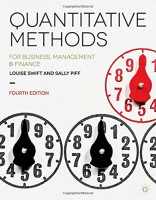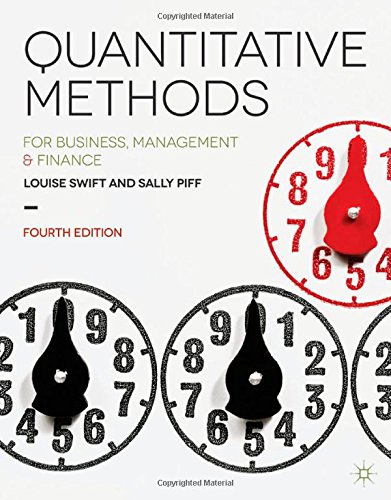 Authors: Louise Swift and Sally Piff
Authors: Louise Swift and Sally Piff
Publisher: Palgrave Macmillan – 704 pages
Book Review by: Venkat Subramaniam
This book is a very user-friendly tool for analyzing three basic but very important functions of a company
- Information about its marketplace
- Company performance – how well or poorly it is doing
- How its customers and potential customers are behaving: who, what, and where they are, as well as how, when and why they buy its products and / or its services and those of its competitors.
While this book has been written for use primarily as a text by freshman college students, it is also useful for those students in later years as well as in postgraduate courses, such as in an MBA program.
Besides their use in business, the analytical measures it presents can also be utilized in government, scientific, and other types of organizations that compile data and need to look at the pictures they create once that data is tabulated and formatted. Such pictures are valuable for boards and executives in making important decisions relating to growth and developing efficiencies.
The essential mathematical models are presented in the first section, followed by higher-level models including special equations, use of curves and rates of change. Following those are three sections: on describing data, probability and statistics. The last chapter takes up seven other aspects of business modeling. We present an overview of the book’s contents here below:
- Essential Maths
- Numbers and symbols
- Simplifying expressions
- Solving problems
- Modeling using straight lines
- More Maths
- Some special equations
- Modeling using curves
- Rates of change
- Describing Data
- Pictures of data
- Summarizing data
- Probability
- Measuring uncertainty
- Numerical outcomes
- Continuous numerical outcomes
- Some more probability distributions
- Statistics
- Estimation
- Testing hypotheses
- Correlation and regression
- Comparing two populations
- Nonparametric methods
- Categorical data
- Forecasting
- Statistics in practice
- Business Modeling
- Linear programming models
- Planning projects
- Models for inventory control
- Time and money
- Decision making
- Simulating reality
- Controlling quality
To gain more from this book, go to its special companion website:
www.Palgrave.com/Companion/Swift-Quantitative-Methods-4. This website offers instructors a testbank, Microsoft Powerpoint slides, and assessment solutions. Students will find multiple-choice practice questions, data sets, and extra exercises.
Here are some of the important features of this textbook:
- All the key topics – probability, statistics, and management science – in one text.
- Suitable for all math backgrounds. And an optional introductory part assumes only that you can add, subtract, divide, and multiply.
- Enough statistics coverage to enable you to analyze your own data for projects and reports.
- Practical guidance in the use of IBM SPSS and Microsoft Excel where appropriate
- Teaches you how to approach a statistical analysis and which technique to use – making the book a valuable reference for future work.
- New ‘Moving to the real world’ feature to bridge the gap between each business modeling technique and its use in business and industry.
This book has been written in clear, easy-to-understand language. It presents to you examples, exercises, and activities to enable you to practice and reinforce your learning. An excellent, practical, hands-on guide!
Louise Swift taught quantitative methods to students of business, management, and finance for more than ten years at the University of East Anglia, UK, where she now works as a statistician.
Sally Piff is a Lecturer in Quantitative Methods at Norwich Business School, University of East Angli, UK.







